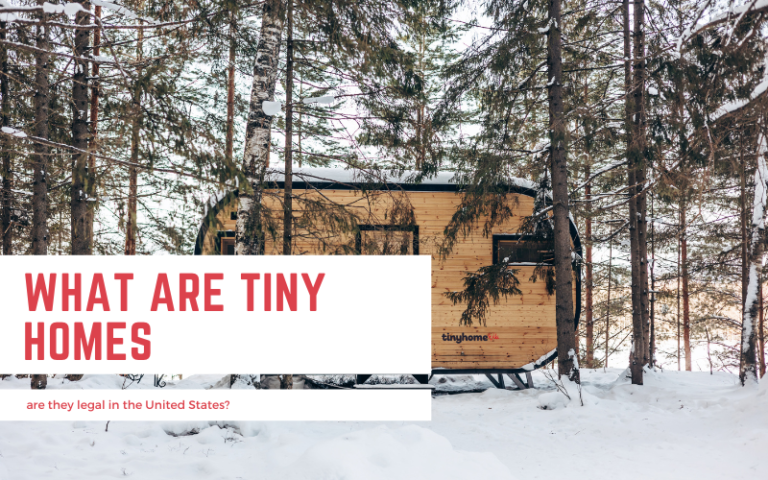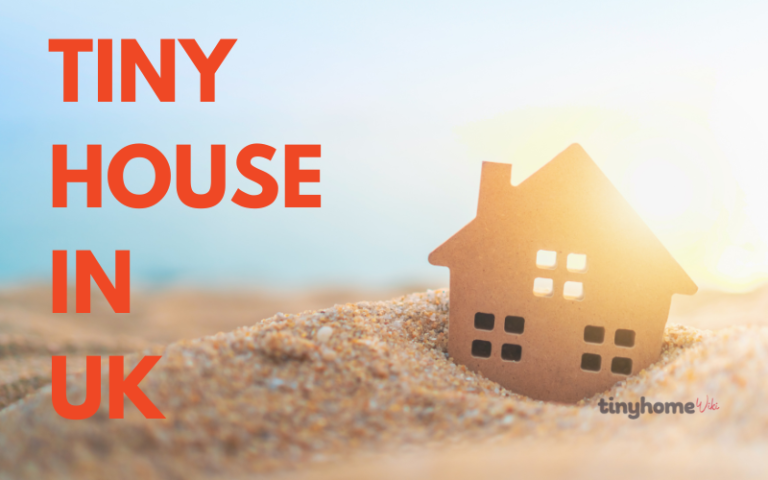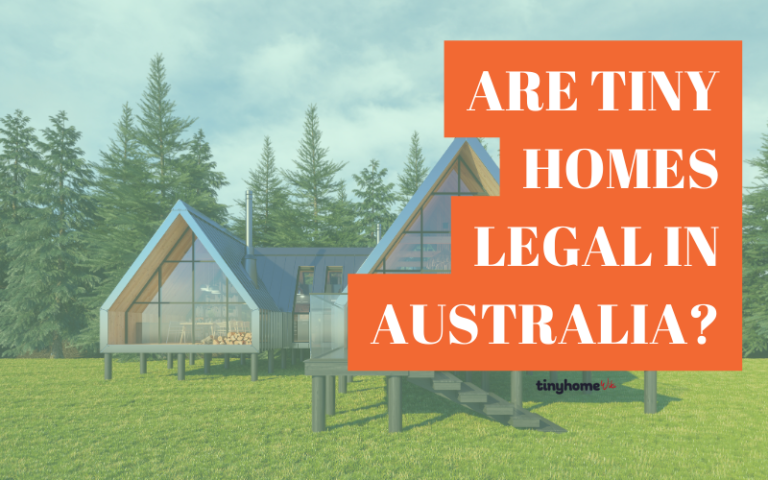Tiny Homes on Wheels (THOWs): A Modern Solution to Affordable Housing
Tiny homes on wheels (THOWs) are a popular trend in the tiny house movement, offering an affordable and sustainable alternative to traditional housing.
These homes are built on a trailer chassis, allowing them to be mobile and easily transported from one location to another.
Due to their size, they naturally consume fewer resources, and many are designed to be energy efficient, making them an eco-friendly option for those who want to reduce their ecological footprint.
THOWs come in all shapes and sizes and can be purchased anywhere between $9,000-$150,000.
They offer a unique living experience for those who want to downsize and embrace a minimalist lifestyle.
Despite their small size, many THOWs are designed to maximize space and offer all the amenities of a traditional home, including full kitchens, bathrooms, and even stand-alone tubs, marble counters, and fireplaces in some premium models.
However, before investing in a THOW, it’s important to understand your area’s legal and zoning regulations.
While some cities and states have embraced the tiny house movement, others have strict regulations limiting where THOWs can be parked and lived.
In this article, we will explore the benefits and features of THOWs, as well as legal and zoning considerations, to help you decide whether a tiny home on wheels is the right choice for you.
Tiny Homes on Wheels: An Overview
Tiny homes on wheels (THOWs) have become increasingly popular as people seek more affordable and sustainable housing options.
These homes are typically between 100 and 400 square feet and are built on a trailer or other mobile platform, allowing them easily transported to different locations.
One of the major advantages of THOWs is their affordability. While traditional homes can cost hundreds of thousands of dollars, tiny homes on wheels can be purchased for as little as $9,000.
This makes them an ideal option for those who want to own their own home but cannot afford the high costs associated with traditional housing.
In addition to being affordable, THOWs are also more sustainable than traditional homes.
Due to their small size, they consume fewer resources and are often designed to be energy-efficient.
Many THOWs also incorporate sustainable features such as solar power, rainwater collection, and composting toilets, which further reduce their ecological footprint.
However, there are also some drawbacks to living in a tiny home on wheels. For example, they often have limited appliances and counter space, making cooking and getting ready in the morning more difficult.
Additionally, THOWs require regular maintenance and repairs due to the wear and tear that comes with traveling, and they also depreciate in value like a car or RV.
Despite these drawbacks, the benefits of living in a tiny home on wheels are clear.
They offer affordable and sustainable housing options for those willing to embrace a minimalist lifestyle.
Benefits of Tiny Homes on Wheels
Tiny homes on wheels (THOWs) have become increasingly popular in recent years due to their numerous benefits.
These diminutive domiciles offer a range of advantages, including environmental impact, financial advantages, and lifestyle flexibility.
Environmental Impact
One of the most significant benefits of THOWs is their environmental impact. These homes are often designed to be energy-efficient, using sustainable materials and renewable energy sources.
They are also typically smaller, requiring less energy to heat and cool.
As a result, THOWs have a much lower carbon footprint than traditional homes.
Financial Advantages
Another key benefit of THOWs is their financial advantages.
They are significantly cheaper than traditional houses, reducing mortgage costs or eliminating them entirely.
Additionally, THOWs often require less maintenance and upkeep, saving homeowners money in the long run.
Furthermore, THOWs can be easily moved from one location to another, saving money on rent or mortgage payments.
Lifestyle Flexibility
THOWs offer unparalleled lifestyle flexibility. They can be parked in various locations, from campgrounds to RV parks, and easily moved from one location to another.
This means that homeowners can travel and explore new places without sacrificing the comforts of home.
Additionally, THOWs often have a smaller footprint, requiring less time and effort to clean and maintain.
This leaves homeowners with more time to pursue their hobbies and interests.
Overall, THOWs offer a range of benefits, including environmental impact, financial advantages, and lifestyle flexibility.
They are an excellent option for those looking to downsize, travel, or live more sustainably.
Design and Construction of THOWs
Space Optimization
Designing and constructing a Tiny House on Wheels (THOW) requires a unique approach to space optimization.
Since the space is limited, every inch should be utilized efficiently. One way to optimize space is by incorporating multi-functional furniture such as a sofa bed or a foldable table.
Additionally, using vertical space by installing shelves and cabinets up to the ceiling can help maximize storage space.
Another consideration for space optimization is the layout of the THOW.
It is important to plan the layout carefully to ensure enough space for all the necessary areas, such as the kitchen, bathroom, sleeping area, and living area.
A well-designed layout can make a significant difference in the functionality and livability of the THOW.
Mobility Considerations
Mobility is a critical factor to consider in designing and constructing THOWs.
Since they are built on a trailer chassis, they must be designed to withstand transportation stresses.
The THOW should be lightweight yet sturdy enough to withstand the bumps and vibrations of the road.
Another consideration is the height and width of the THOW. The legal limit for transportation on public roads is 13.5 feet in height and 8.5 feet in width.
Therefore, the design must adhere to these measurements to ensure the THOW can be transported legally.
Building Materials
Choosing the right building materials is crucial for the construction of a THOW. The materials should be lightweight yet durable enough to withstand the elements and transportation stresses. Some common materials used in THOW construction include:
- SIPs (Structural Insulated Panels)
- Steel or aluminum framing
- Lightweight composite materials
- Recycled or reclaimed materials
It is important to note that using certain materials may affect the weight and mobility of the THOW. Therefore, it is essential to choose materials that strike a balance between durability, weight, and mobility.
In conclusion, designing and constructing a THOW requires careful consideration of space optimization, mobility, and building materials. By considering these factors, one can create a functional and livable THOW that is both lightweight and sturdy enough to withstand transportation.
Legalities and Zoning Issues
When it comes to tiny homes on wheels (THOWs), some legalities and zoning issues need to be considered.
This section will explore some of the key concerns related to zoning laws, building codes, and insurance and financing.
Zoning Laws
One of the biggest challenges for THOWs is navigating local zoning laws.
Since most zoning codes in the country have no universal definition of a tiny house, they are often classified as recreational vehicles (RVs).
This can cause problems since RV parking is usually highly restricted.
Furthermore, minimum square footage requirements in single-family residential zones are often set well above the size of a tiny home.
It may be not easy to find a legal place to park or live in a THOW.
Cities are responding to these zoning challenges in a variety of ways.
Some are creating new zoning categories for tiny homes, while others are allowing them as accessory dwelling units (ADUs) in residential zones.
It is important to research local zoning laws before investing in a THOW.
Building Codes
Another important consideration for THOWs is compliance with building codes. Since THOWs are not considered permanent structures, they are often exempt from traditional building codes.
However, many states and municipalities have adopted their own codes specifically for THOWs.
It is important to ensure that a THOW is built to code to ensure safety and legal compliance.
Some common building code requirements for THOWs include minimum ceiling heights, egress windows, and smoke detectors.
Insurance and Financing
Finally, it is important to consider insurance and financing options for THOWs. Since they are not considered traditional homes, they may not be eligible for standard home insurance policies. Instead, owners may need to purchase RV or specialized tiny home insurance.
Financing options for THOWs can also be limited.
Since they are not considered permanent structures, they may not qualify for traditional mortgages.
Instead, owners may need to seek out personal loans or RV loans.
Overall, navigating the legalities and zoning issues related to THOWs can be challenging.
However, with careful research and planning, finding a legal and safe place to park and live in a THOW is possible.
Challenges and Limitations of THOWs
Limited Living Space
One of the biggest challenges living in a THOW is the limited living space.
Due to the compact size of these homes, there is a limited amount of space for storage, furniture, and personal belongings.
This can make it difficult for individuals who are used to living in larger homes to adjust to the smaller space. It is important to carefully consider what items are necessary and what can be eliminated when transitioning to a THOW.
Mobility Restrictions
While the mobility of THOWs is one of their main benefits, it can also be a limitation.
Depending on the size and weight of the home, it may require a larger vehicle to tow it or a special permit to transport it on certain roads.
Additionally, parking and finding a suitable parking location can be a challenge, especially in urban areas where zoning laws may restrict where THOWs can be parked.
Maintenance Requirements
Maintaining a THOW can also be a challenge, especially when it comes to the exterior.
Due to the mobility of the home, it may be exposed to harsh weather conditions and road debris, which can cause wear and tear over time.
Additionally, regular maintenance tasks such as checking for leaks and maintaining the plumbing and electrical systems can be more difficult in a THOW due to the limited space and mobility.
While THOWs offer many benefits, such as mobility and affordability, they also come with challenges and limitations that must be carefully considered before transitioning to living in one.
Case Studies of Tiny Homes on Wheels
Tiny homes on wheels (THOWs) have become increasingly popular due to their affordability, mobility, and minimal environmental impact.
Here are a few case studies of individuals who have chosen to live in THOWs:
Case Study 1: The Nomadic Family
John and Sarah, a couple with two young children, decided to downsize and live a nomadic lifestyle in a THOW.
They were tired of the hustle and bustle of city life and longed for a simpler way of living.
They built their THOW and customized it to fit their family’s needs. The home includes a loft bedroom for the parents, a bunk bed for the children, a full kitchen, and a bathroom with a composting toilet.
They have been living in their THOW for over a year and have traveled to various parts of the country, enjoying the freedom and flexibility of living on wheels.
Case Study 2: The Minimalist Couple
Mark and Lisa, a couple in their 30s, built a THOW to simplify their lives and reduce their environmental footprint.
They designed and built their THOW, incorporating sustainable materials and energy-efficient features.
Their home includes a loft bedroom, a living area, a kitchen with a propane stove and refrigerator, and a bathroom with a composting toilet.
They have been living in their THOW for two years and have found that it has allowed them to save money, reduce their carbon footprint, and focus on what truly matters.
Case Study 3: The Retiree
After retiring, Tom decided to sell his large house and downsize to a THOW.
He worked with a builder to design and construct a custom THOW that includes a bedroom, a living area, a kitchen with a full-size refrigerator and stove, and a bathroom with a regular toilet and shower.
He parks his THOW in a community of other THOWs and enjoys the sense of community and shared values of living in a small space.
He has found that living in a THOW has allowed him to live a more active and fulfilling retirement, as he spends less time maintaining a large house and more time pursuing his hobbies and interests.
These case studies demonstrate the versatility and appeal of living in a THOW.
While it may not be the right choice for everyone, THOWs offer a unique and affordable housing option for those looking to simplify their lives and reduce their environmental impact.
The Future of Tiny Homes on Wheels
Tiny homes on wheels (THOWs) have been gaining popularity in recent years as a solution to the housing crisis and a way to live a simpler, more sustainable lifestyle.
As the demand for THOWs continues to grow, several trends are likely to shape the future of this movement.
1. Increased Customization
One of the great advantages of THOWs is their flexibility and customization.
In the future, we can expect to see even more custom-built THOWs tailored to their owners’ specific needs and preferences.
This could include everything from unique layouts and storage solutions to high-tech features like smart home automation and renewable energy systems.
2. Improved Mobility
Another trend likely to shape the future of THOWs is improved mobility.
As more people choose to live in these homes full-time, there will be a greater demand for THOWs that are designed to be easily transportable.
This could include innovations like foldable or modular designs that can be easily disassembled and reassembled, as well as improvements in lightweight materials and aerodynamics.
3. Greater Accessibility
Finally, as the tiny home movement grows, we can expect greater accessibility for people of all ages and abilities.
This could include wheelchair ramps, wider doorways, and more accessible bathroom and kitchen designs.
Additionally, there will likely be an increased focus on making THOWs more affordable and accessible to a wider range of people, including those with lower incomes or who are currently homeless.
Overall, the future of THOWs looks bright, with continued innovation and customization, improved mobility, and greater accessibility.
As more people embrace the tiny home lifestyle, we can expect to see a wider range of options and designs that cater to each individual owner’s unique needs and preferences.






